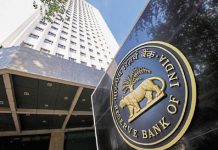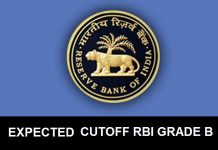Important Terms 3- For competitive exams
This page include a glossary of Important terms which are being discussed and asked in competitive exams
- Tier 1 capital : A term used to describe the capital adequacy of a bank. Tier I capital is core capital; this includes equity capital and disclosed reserves. Tier 1 is a bank’s core capital. The main components of Tier 1 are ordinary shareholders equity; retained earnings; perpetual (undated) non-cumulative preferred stock (Tier 1 Preferred); reserves created by appropriations of retained earnings, share premiums and other surpluses; and minority interests. The equity and reserves element of Tier 1 is often referred to as ‘Core Tier 1’. The Tier 1 Preferred elements are often known as ‘hybrid instruments’ because they have a mix of both debt and equity features.
- Certificate of Deposit:: A time deposit that is payable at the end of a specified term. CDs generally pay a fixed interest rate and generally offer a different interest rate than other types of deposit accounts. If an early withdrawal from the CD prior to the end of the term is permitted, a penalty is usually assessed. CD is sold at discount value and being a money market instrument, can be transferred to other person through negotiation.
- General Insurance Corporation of India : The entire general insurance business in India was nationalized by the Government of India (GOI) through the General Insurance Business (Nationalization) Act (GIBNA) of 1972. 55 Indian insurance companies and 52 other general insurance operations of other companies were nationalized through the act.
The General Insurance Corporation of India (GIC) was formed in pursuance of Section 9(1) of GIBNA. It was incorporated on 22 November 1972 under the Companies Act, 1956 as a private company limited by shares. GIC was formed to control and operate the business of general insurance in India.
The GOI transferred all the assets and operations of the nationalized general insurance companies to GIC and other public-sector insurance companies. After a process of mergers and consolidation, GIC was re-organized with four fully owned subsidiary companies: National Insurance Company Limited, New India Assurance Company Limited, Oriental Insurance Company Limited and United India Insurance Company Limited.
GIC and its subsidiaries had a monopoly on the general insurance business in India until the landmark Insurance Regulatory and Development Authority Act (IRDA Act) of 1999 came into effect on 19 April 2000. This act also amended the GIBNA Act and Insurance Act of 1938. The act along with the amendments ended the monopoly of GIC and its subsidiaries and liberalized the insurance business in India - Marginal Standing Facility: The Marginal Standing Facility (MSF) Scheme is operational on the lines of the existing Liquidity Adjustment Facility – Repo Scheme (LAF – Repo) i.e. commercial banks can borrow money from RBI. The basic difference between Repo and MSF scheme is that in MSF banks can use the securities under SLR to get loans from RBI and hence MSF rate is 1% more than repo rate.
- CRR (Cash Reserve Ratio):: CRR means Cash Reserve Ratio. Banks in India are required to hold a certain proportion of their deposits in the form of cash. However, actually Banks don’t hold these as cash with themselves, but deposit such case with Reserve Bank of India (RBI) / currency chests, which is considered as equivalent to holding cash with RBI. This minimum ratio (that is the part of the total deposits to be held as cash) is stipulated by the RBI and is known as the CRR or Cash Reserve Ratio.
- Bank Rate :: Bank Rate is the rate at which central bank of the country (in India it is RBI) allows finance to commercial banks. Bank Rate is a tool, which central bank uses for short-term purposes. Any upward revision in Bank Rate by central bank is an indication that banks should also increase deposit rates as well as Base Rate / Benchmark Prime Lending Rate. Thus any revision in the Bank rate indicates that it is likely that interest rates on your deposits are likely to either go up or go down, and it can also indicate an increase or decrease in your EMI.
- Cheque Trancation System:: Cheque Truncation System (CTS) or Image-based Clearing System (ICS), in India, is a project undertaken by the Reserve Bank of India (RBI) in 2008, for faster clearing of cheques. CTS is based on a cheque truncation or online image-based cheque clearing system where cheque images and magnetic ink character recognition (MICR) data are captured at the collecting bank branch and transmitted electronically.
- NPA :: Non-performing assets, also called non-performing loans, are loans made by a bank or finance company, on which repayments or interest payments are not being made on time. A debt obligation where the borrower has not paid any previously agreed upon interest and principal repayments to the designated lender for an extended period of time. The nonperforming asset is therefore not yielding any income to the lender in the form of principal and interest payments.
- Foreign Exchange Reserves :: Foreign exchange reserves (also called FOREX Reserves) in a strict sense are only the foreign currency deposits and bonds held by central banks and monetary authorities. However, the term in popular usage commonly includes foreign exchange and gold, SDRs and IMF reserve positions.


















